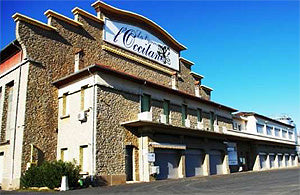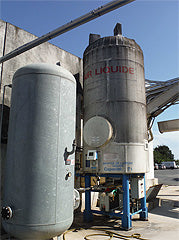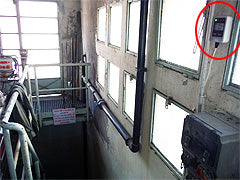
e-viti.com supplies wine vineyards, nurseries and orchards with a complete line of products including specialized hand tools, trellises, bottling equipment and more. Recently they assisted in installing one of our CO2 Storage Alarms to monitor leaks in the basement of the harvest receiving dock at the winery Les Vignerons de L'Occitane Servian in L'Herault, France.

The winery uses an Air Liquide outdoor compressed CO2 tank system to distribute CO2 though pipelines throughout the cellar. As liquid CO2 pressure is quickly reduced, it solidifies into dry ice. Dry ice is used to quickly cool down grapes after picking, and during the cold soak phase of the wine-making process. As the dry ice melts, the carbon dioxide gas also creates a hypoxic environment which helps to prevent bacteria from growing on the grapes. In addition, empty transfer pipes filled with carbon dioxide when not in use are not prone to oxidation (rust).
CO2Meter.com’s RAD-0102-6 Remote CO2 Storage Safety 3 Alarm is placed 12 in. from the floor of the basement in the piping passage area where CO2 is injected into the pipelines.
A display shows the CO2 levels and temperature, and audible and visual alarms reflect the three programmable thresholds that meet all NFPA, NBIC, and IFC CO2 safety standards and regulations.

The remote display is placed at eye level and away at the top of the stairs to the basement to alert the staff of any leak of CO2 in the hazardous area of the basement before entering the space. This is especially important, since CO2 is heavier than air, and will fill the basement before anyone on the main floor is aware of the danger.
If the first programmable threshold is exceeded, an audible alarm (80 dB) and visual alarm appears on the sensor and remote display. The built-in relay automatically turns on an exhaust fan that discharges the carbon dioxide-rich air outside the building.

If the second programmable threshold is exceeded, a 120dB siren placed ten meters from the control desk sounds throughout the building to force staff to evacuate.
Once the building has been evacuated and after the gas is expelled, the supervisor can test for any further CO2 buildup in the basement with a portable CO2 detector.








